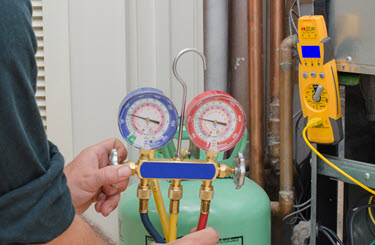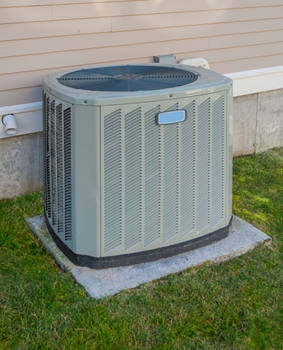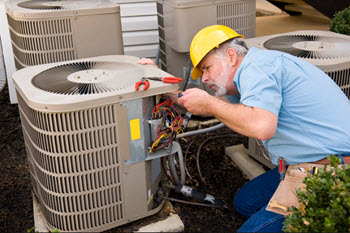 If you are using an old air conditioner, then you have to be mindful of its remaining service life. The end of 2019 severely crippled air conditioning units that use the old R22 refrigerant. There is a ban on the product across the US., where R22 production and importation is no longer allowed. Consequently, this ban led to a limit of current supplies, resulting in R-22 refrigerant prices to skyrocket. Read on to find out more details on the phase-out and the equipment usage of R22.
If you are using an old air conditioner, then you have to be mindful of its remaining service life. The end of 2019 severely crippled air conditioning units that use the old R22 refrigerant. There is a ban on the product across the US., where R22 production and importation is no longer allowed. Consequently, this ban led to a limit of current supplies, resulting in R-22 refrigerant prices to skyrocket. Read on to find out more details on the phase-out and the equipment usage of R22.
It is not advisable to use HVAC systems that are old to the point of obsolescence. As they age, air conditioners tend to consume more energy, require costly repairs, and exhibit declining performance. Most R22 units are at the end of their lifespan and fall under this category.
Owners who try to hold on to their old units will face incredibly high repair fees. If your R22 unit has a leak, you can expect to pay a hefty bill for a refrigerant refill. This circumstance prompts many homeowners to make a crucial decision: repair the leak or completely upgrade the air conditioning system.
Since the finalization of the r22 phase-out, the supply of R22 has steadily declined while its cost has crept upwards. A simple recharge can set you back half the price of a full upgrade to a new cooling system. Considering the improved efficiency of modern units, you will save money in the long run if you opt for a replacement.
Where To Start
Contents
- 1 How To Know If Your Air Conditioner Uses R22 Refrigerant
- 1.1 1. Find Out The Manufacturing Date Of The Cooling System
- 1.2 2. Try To Remember The Date Of The A/C Installation
- 1.3 3. Read About The Manufacturer’s Stated Specifications
- 1.4 4. Reach Out To The Manufacturer The Air Conditioner
- 1.5 5. Get Help From Your Local HVAC Contractor
- 1.6 The EPA’s R-22 Refrigerant Phase-Out & Your Air Conditioner
- 1.7 What Cooling Options Are Available For Homeowners?
- 1.8 Conclusion
To make the right call, start by checking the refrigerant used in your A/C. Units that were made after 2010 are likely to contain a different type of refrigerant so repairs can still be economical. Manufacturers switched to R-410a around this time to comply with the regulations. However, prior to 2010, R-22 enjoyed its status as the industry standard. Knowing the type of coolant circulating in your system will help you make the right decision for yourself and your loved ones.
Age trumps performance in this situation. Even if the air conditioner is continuing to perform well, the fact that a vital component will soon be unavailable creates some anxiety. The unit will falter sooner or later. Owners will have to prepare for this eventuality. Since the R22 refrigerant will be more difficult to access by 2020 and beyond, saving for a replacement should begin as soon as possible.
This article will provide a few of the strategies that may be utilized to know the kind of refrigerant inside the existing cooling system. We will also discuss some essential details about the R-22 phase-out.
How To Know If Your Air Conditioner Uses R22 Refrigerant
1. Find Out The Manufacturing Date Of The Cooling System
 The year that the air conditioning system was made offers a quick way to know if R-22 is inside it. Look for the data plate around the air handler or the condenser unit. The HVAC industry experienced significant changes at specific points in time.
The year that the air conditioning system was made offers a quick way to know if R-22 is inside it. Look for the data plate around the air handler or the condenser unit. The HVAC industry experienced significant changes at specific points in time.
For example, AC units before 1996 are most likely using R-22. Those from 1996 up to 2009 could contain R-22 or R-410A. Due to the uncertainty for this transition period, owners will need to perform additional verifications. Units after 2010 use the R-410A refrigerant.
2. Try To Remember The Date Of The A/C Installation
Aside from the date of manufacturing, the time of installation can also give vital clues. The Environmental Protection Agency or EPA declared it illegal to install A/Cs with R22 starting in 2010. With that information, we can safely assume that systems installed from that year onwards don’t contain R22.
3. Read About The Manufacturer’s Stated Specifications
You can always check the refrigerant directly if you want to. Instead of getting clues from important dates, you could open the manual or go to the manufacturer’s site to see the unit’s specifications. Just look for the nameplate located on the condenser unit if you are not familiar with the model. This nameplate may contain the details that you are looking for. Most modern air conditioners will also have a sticker that certifies the absence of R-22.
4. Reach Out To The Manufacturer The Air Conditioner
In case the nameplates or labels are missing, you might want to consider talking to the manufacturer directly. Their staff should be able to pull up the information you need. Just provide them with the details of the system, such as the make and model, so that they can help you right away.
5. Get Help From Your Local HVAC Contractor
 As a last resort, you could ask your local HVAC contractor to find out more about the refrigerant for you. You should ideally call them for an annual tune-up anyway.
As a last resort, you could ask your local HVAC contractor to find out more about the refrigerant for you. You should ideally call them for an annual tune-up anyway.
When they come, you will have the perfect opportunity to pose questions related to your system. Their knowledge and experience with air conditioners will make the refrigerant easy to figure out. They are aware of all the models that use R-22. They also know several ways to verify the information.
The EPA’s R-22 Refrigerant Phase-Out & Your Air Conditioner
The R-22 phase-out has been a long process that started in 2010. The EPA knew that it won’t happen overnight given the product’s status as the industry standard before its discovery to cause environmental damage. First, it encouraged the development and adoption of alternative refrigerants. Then they barred the use of R22 in new systems. Now they have made it illegal to manufacture or import the substance to the US. Currently, there is a market shortage, thus pushing the r-22 prices upward. People can still use their old air conditioners, but they will find it increasingly difficult to maintain them because of the costly repair and recharge rates. Recharging can cost half the price of a modern A/C. Suddenly, getting an air conditioner upgrade has become much more attractive.
What Cooling Options Are Available For Homeowners?
Homeowners can look at the situation from different angles to figure out the best option. If the old air conditioning unit is breaking down frequently, declining in energy efficiency, and performing poorly, then replacing it with a brand new model with state-of-the-art features makes a lot of sense.
Another factor is the cost of recharges after leaks. It is climbing up every month, and the trend will continue. At this point, repairs and energy consumption will begin to get unbearably high. Replacing the whole thing with a new energy efficient unit can end up saving money in the long run. Make it a point to hire a reliable local HVAC contractor for the AC installation.
As for the substantial cash outlay, homeowners can avail of financing if they have a good credit rating. Most HVAC companies provide multiple payment options for their clients.
Conclusion
PFO Heating & Air Conditioning is among the most respected names in the local HVAC scene. Both residential and commercial clients have benefitted from the company’s excellent services throughout the years.
Whether you need HVAC tune-ups, heating and cooling repairs, or replacements, our team will deliver the best possible results at reasonable prices.
Do not hesitate to talk to PFO Heating & Air Conditioning if you have any questions or concerns about your home heating and cooling systems. We can set an appointment for a free consultation and figure out suitable solutions to your problems. Call us today!
Click here to contact us now or call us at (800) 253-9001 to find out more!



